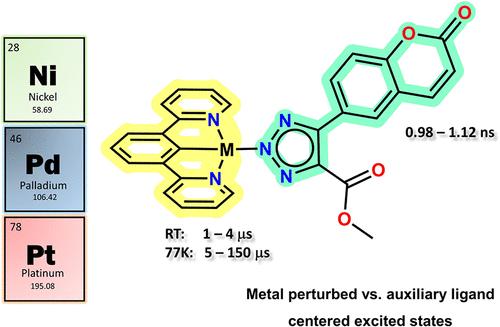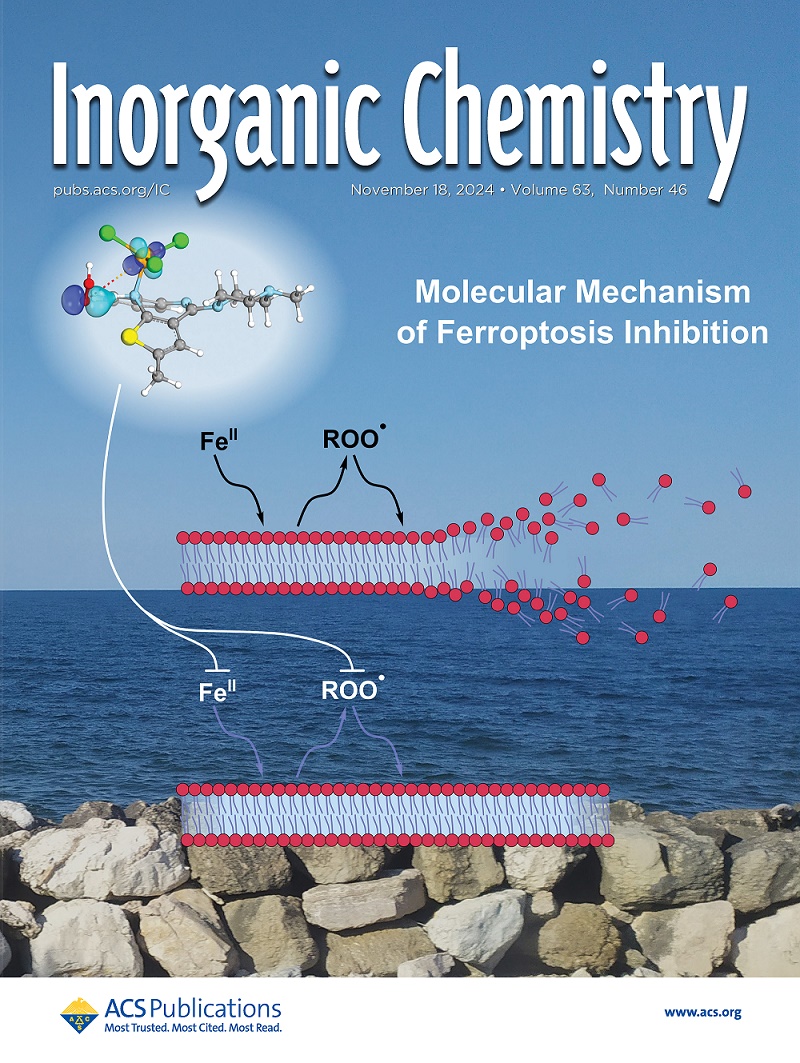Luminescent N^C^N Pincer Ni(II), Pd(II), and Pt(II) Complexes with a Pendant Coumarin Group: The Role of Auxiliary Ligands and Environments
IF 4.3
2区 化学
Q1 CHEMISTRY, INORGANIC & NUCLEAR
引用次数: 0
Abstract
Square-planar d8-configured metal complexes and their excited states play a key role in photocatalysis, sensing, and optoelectronic devices. However, metal-to-ligand charge-transfer (MLCT) excited states involving transition metals, particularly those with a 3d8 electronic configuration, present challenges due to rapid nonradiative relaxation via low-lying metal-centered (MC) states. In this work, an isoelectronic and isostructural series of cyclometalated complexes [MX(dpb)] with M = Ni(II), Pd(II), and Pt(II), dpb = 1,3-di(2-pyridyl)phenide, and auxiliary ligand X = chlorido, azido, and triazolato were studied by UV/vis absorption, steady-state, and time-resolved photoluminescence spectroscopy in solution and frozen glassy matrix at 77 K, along with DFT calculations. Consistently, the Pd(II) and Pt(II) complexes exhibited a characteristic emission from their triplet ligand-centered (3LC) excited states. In contrast, Ni(II) complexes with auxiliary chlorido, azido, and triazolatoCOOCH3,COOCH3 ligands were nonemissive at low and room temperatures, due to the presence of low-lying MC-type ligand-field excited states. On the other hand, [Ni(triazolatoCoumarin,COOCH3)(dpb)] showed phosphorescence from the T5 state in a frozen glassy matrix at 77 K, since the restrictive environment limits structural relaxation, while at room temperature, the primary emission is due to singlet LC excited states from the coumarin moiety of the free ligand.

求助全文
约1分钟内获得全文
求助全文
来源期刊

Inorganic Chemistry
化学-无机化学与核化学
CiteScore
7.60
自引率
13.00%
发文量
1960
审稿时长
1.9 months
期刊介绍:
Inorganic Chemistry publishes fundamental studies in all phases of inorganic chemistry. Coverage includes experimental and theoretical reports on quantitative studies of structure and thermodynamics, kinetics, mechanisms of inorganic reactions, bioinorganic chemistry, and relevant aspects of organometallic chemistry, solid-state phenomena, and chemical bonding theory. Emphasis is placed on the synthesis, structure, thermodynamics, reactivity, spectroscopy, and bonding properties of significant new and known compounds.
 求助内容:
求助内容: 应助结果提醒方式:
应助结果提醒方式:


